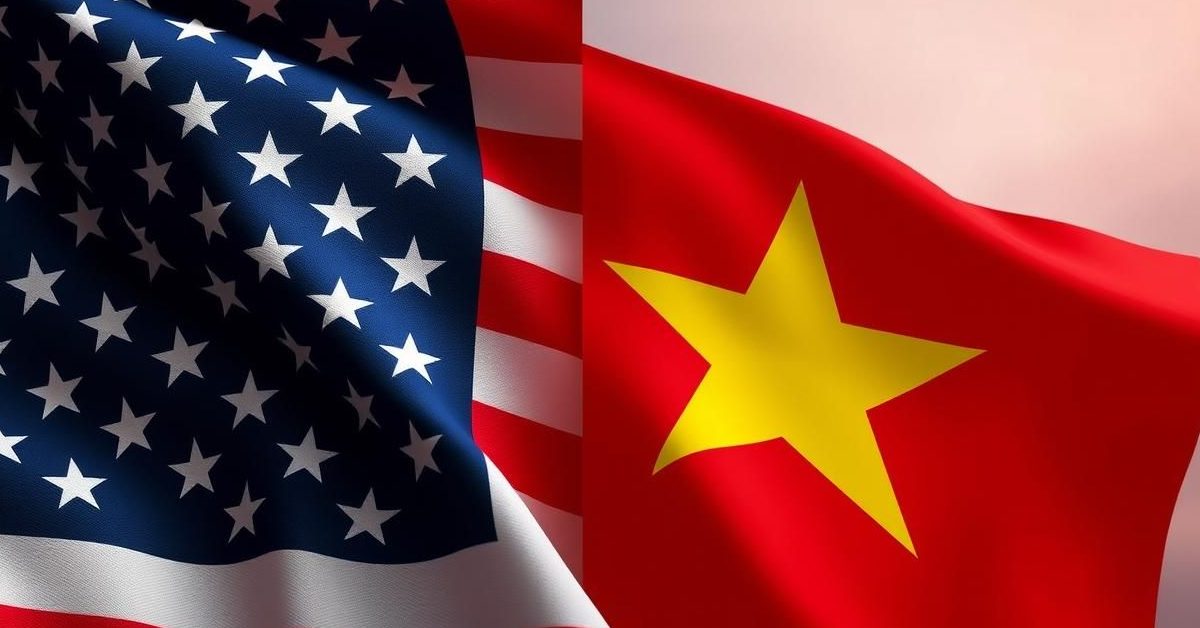As the India-United States trade deal nears its announcement, the recently signed US-Vietnam agreement offers crucial insights into how the Trump administration is approaching its trade negotiations globally.
Understanding the US-Vietnam Trade Deal
The new trade deal between the US and Vietnam appears significantly lopsided. The United States will impose a 20% tariff on Vietnamese goods entering the country. In contrast, Vietnam has been pushed to remove all tariffs on American products.
While the 20% tariff is lower than an initially proposed 46%, it’s still higher than previous reciprocal rates. This deal sets a precedent, indicating that future agreements with smaller, developing nations might also heavily favor the US.
The “China Red Flag”: A Strategic Move
Targeting Transshipments
A critical detail in the Vietnam deal targets goods transshipped through the country. Any products containing foreign components that pass through Vietnam before heading to the US will face a steep 40% double tariff. This measure is a clear signal directed at China.
Many Chinese components, such as fabrics for clothing or parts for electronics, are integrated into goods manufactured or assembled in Vietnam and then exported. This higher tariff aims to make Chinese producers less competitive, even when using production bases like Vietnam. It suggests a template for other ASEAN countries seen as Chinese transshipment hubs, reinforcing the Trump administration’s tough stance on Beijing.
Broader Implications for Trade Pacts
The Vietnam deal highlights a focus on “headline tariffs” rather than intricately addressing sectoral tariffs. This has been a sticking point for other nations like Japan and South Korea, which have complex tariff lines. It suggests that even after a deal is reached, there may still be complexities, especially with Asian economies.
A significant takeaway is that the US tariff offensive will likely continue to target China. This ongoing pressure creates opportunities for countries like India if they can secure more favorable terms in their own trade agreements.
India’s Strategic Approach to the US Deal
Maintaining a Tariff Differential
New Delhi is operating on the assumption that Washington D.C. will maintain a consistent tariff differential between China and countries like India. Securing a deal is seen as vital for India to ensure this gap persists, especially as Beijing also seeks its own agreements with the US. The Vietnam deal appears to validate this view.
Despite concerns about agriculture and perceived pressure from the Trump administration on sensitive issues, many policymakers in India believe a deal is crucial. While a full-scale, comprehensive agreement might be out of reach for now, India might pursue a more limited, “early-harvest” type of deal.
Flexible Tariff Policies
There’s a growing understanding within India that reducing tariffs across various segments, especially intermediate goods, could benefit the country. While India’s “redlines” remain sensitive sectors like dairy and cereals, where agricultural livelihoods are at stake, there is increased openness to cutting tariffs on some industrial goods, including automobiles, and certain agricultural products of interest to the US.
India also has room to increase imports from the US in sectors like crude oil, defense equipment, and nuclear technology. This could help address President Trump’s repeated concerns about the trade deficit. It’s now understood that higher baseline tariffs are here to stay, and India’s negotiation focuses on securing an effective duty rate between 10% and 26%, aiming for a favorable differential compared to Chinese products.
- The US-Vietnam deal is lopsided, with the US imposing a 20% tariff while Vietnam drops all.
- A 40% double tariff targets goods transshipped through Vietnam with foreign (likely Chinese) components.
- US trade strategy under Trump continues to prioritize headline tariffs and targets China.
- India seeks a US deal to maintain a favorable tariff differential with China.
- India is open to cutting tariffs on some industrial and agri goods, but protects sensitive sectors.
The global trade landscape continues to evolve, with strategic tariff negotiations playing a central role in shaping international economic relationships.














